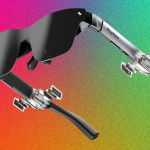Kent Washington-based aerospace firm Blue Origin, owned and overseen by the retail billionaire Jeff Bezos, has tested its BE-4 rocket engine once again, before shipping it to the United Launch Alliance (ULA) for the latter’s Vulcan Centaur rocket. The Centaur is a heavy-lift rocket that is one of three next-generation launch vehicles currently under development in America, and it is the first of them that might make an operational flight next year. The engine successfully completed its four-and-a-half minute test, which covers the time that it will spend during its flight as well. Like SpaceX’s Raptor engines for its Starship rocket, the BE-4 also uses Methane as its fuel, with the engine being yet another to shift from Kerosene as its fuel of choice.
Blue Origin’s BE-4 Engine On Its Way To Decatur For Assembly Into ULA’s Vulcan Rocket
The video was shared on Twitter by ULA’s chief Mr. Tory Bruno, and it came after the executive shared another video late last month of the BE-4’s full-duration firing. These firings mark a crucial point in engine development as they confirm that all components are capable of withstanding the full stress of an actual launch.
It is also the primary engine of both the Vulcan and the New Glenn, which makes it crucial for the American space program. The New Glenn is Blue Origin’s heavy lift vehicle, and it uses seven BE-4s in its first stage to generate a maximum thrust of 3.8 million pounds. The Vulcan, on the other hand, uses four of these engines to churn out 1.1 million pounds of thrust, and the rocket is a replacement for ULA’s Delta lineup which uses Russian-made engines.
Its second or upper stage is also one of the few in the world that will use a nozzle extension for its rocket engines. This extension is also used by the Delta IV Heavy’s cryogenic second stage and it helps improve engine fuel efficiency. On the Centaur (the name for the Vulcan rocket’s second stage) this extension will enable the rocket to deliver heavier payloads to their desired orbits.
Sorry about the delay. Twitter just could not handle a full 4 1/2 min of this much sheer rocket glory. I had to edit it down. Here’s the final Acceptance Test trim run for the @blueorigin #BE4 FE1 engine, shortly on its way to join its twin in Decatur. Volume up #VulcanRocket pic.twitter.com/kLWsSB0rv0
— Tory Bruno (@torybruno) October 29, 2022
The BE-4 is also one of the largest rocket engines in America, as it produces more thrust than SpaceX’s Raptor and Aerojet Rocketdyne’s RS-25 engine. Together, the trio will power the rockets of this decade, and the Raptor, the BE-4 and the RS-25 produce 510,000, 540,000 and 512,000 pounds of thrust, respectively.
However, despite the BE-4 being more powerful, eventually, it will be SpaceX’s Starship rocket that will take the crown of being the world’s largest rocket. This is due to the fact that Starship will use 33 Raptor 2 engines to generate a whopping 7.5 million pounds of thrust. Currently, SpaceX’s largest rocket is the Falcon Heavy, which is capable of generating 5.1 million pounds of thrust by strapping together three Falcon 9 boosters for a total of 27 Merlin 1D engines.
Rocket and engine development go hand in hand, and the size of an engine is often determined by the design goals of the rocket. Starship’s classification as a super heavy lift rocket is simply due to the fact that it is designed to be used as a gateway to Mars. For this purpose, the upper stage, which separates after the rocket exits most of the Earth’s gravity, needs to be larger and accommodate more payload. This then increases the overall weight and requires the rocket itself to be larger too.
On the other hand, neither the Centaur nor the New Glenn is designed for such missions, although they should be capable of sending payloads to Mars too, like any other large rocket. The Vulcan’s first flight is estimated to come next year, and SpaceX is aggressively developing its rocket in Texas, as it moves to conduct a highly anticipated static fire test of all 33 engines at the same time.
The post Jeff Bezos’ Rocket Company Tests Its Huge Engine Once Again! by Ramish Zafar appeared first on Wccftech.







